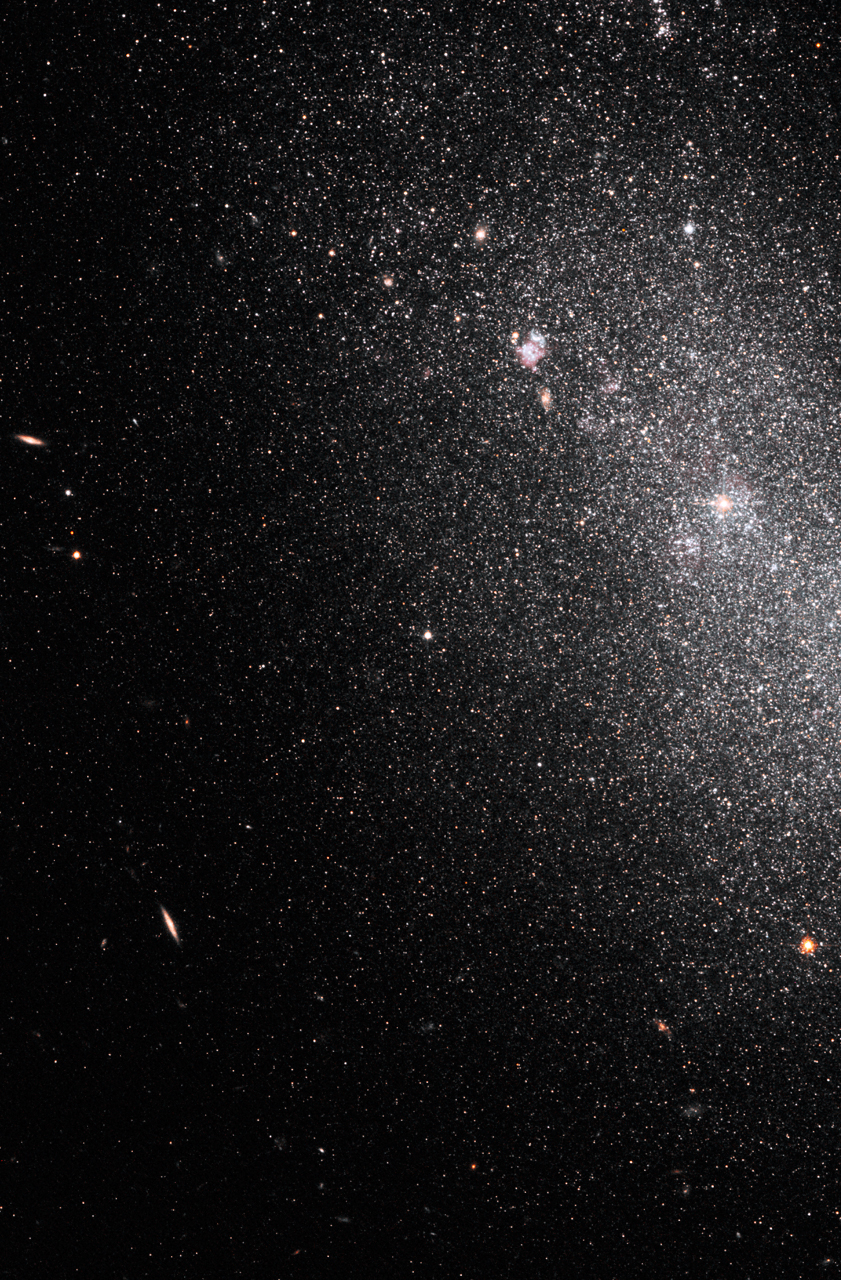
About This Image
These images, taken by NASA's Hubble Space Telescope, show myriad stars residing in the central regions of the three dwarf galaxies NGC 4163, NGC 4068, and IC 4662.
The bluish dots are younger stars; the reddish dots, older stars. The irregularly shaped red blobs in the images of NGC 4163 and IC 4662 are regions of current starburst activity. Starbursts are areas of intense star formation.
The three galaxies are part of a Hubble study of starbursts in nearby, small, or dwarf, galaxies. Based on this study, astronomers have found that starbursts continue 100 times longer than first thought, lasting 200 million to 400 million years. These galaxies show that starbursts are not isolated events, but sweep across a galaxy.
Each of the three starburst galaxies has a different shape. The collection of stars in NGC 4163 is more spherical, with a higher concentration of stars forming in the center. By contrast, the grouping of stars in NGC 4068 is more elongated and has fewer new stars than the other two galaxies. Astronomers think the starburst in this galaxy is ending. In the image of IC 4662 the clumpy red blobs peppered throughout the galaxy indicate active regions of star birth. One such region extends off the image's top, right edge. This galaxy exhibits the strongest star formation of the three galaxies in the study.
The distances of the galaxies range from 8 million to 14 million light-years away.
The images were taken in 2004 by the Advanced Camera for Surveys.






















No hay comentarios:
Publicar un comentario